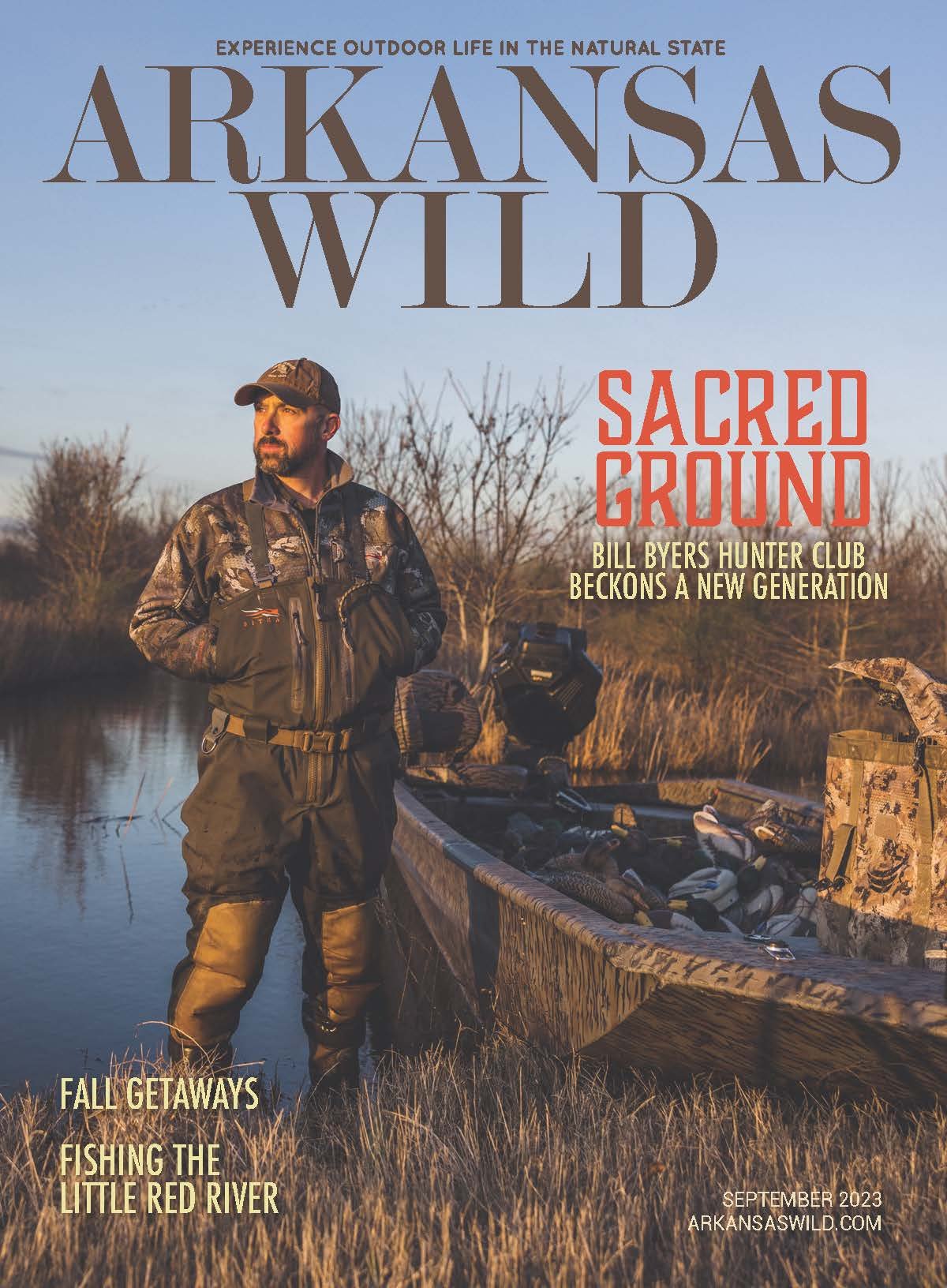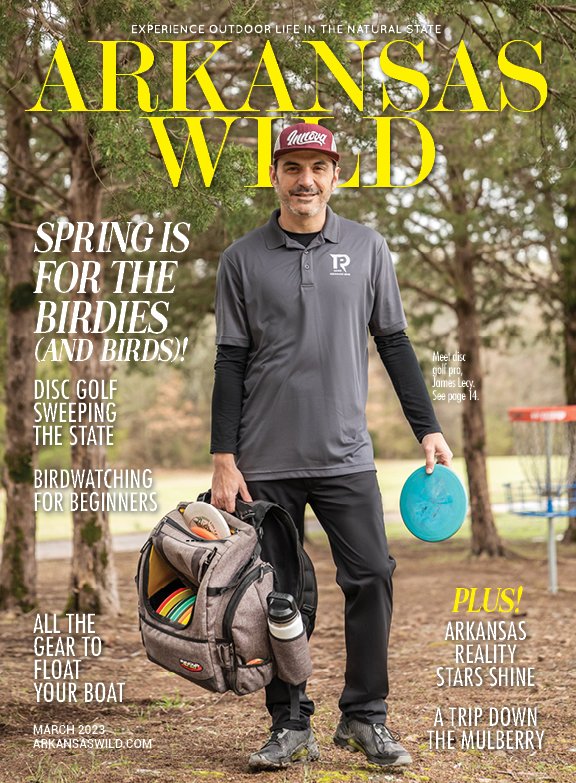The Craft Of Preservation
Advanced Taxidermy’s quest for excellence
By Kat Robinson Photos courtesy of Advanced Taxidermy
Advanced Taxidermy specializes in common mammals like bear (left) and deer (middle). Brandon Mitchell brought his taxidermy expertise from Indiana to Van Buren (right).
Brandon Mitchell is an Indiana transplant. He moved with his wife, Angie, to Arkansas four years ago, settling in Van Buren. Taxidermy, to Brandon, is a craft.
“I got started in it just working with my hands and eyes. A lot of people call it art, but I call it being a craftsman. Art is when you take nothing and make something. In this, God’s already made everything. We’re just trying to put it back together.”
His journey didn’t start easily. He worked for a taxidermist in Indiana for some time. “When I told him I wanted to learn the trade, he handed me back my tools and shut the door on me. Taxidermy is a very cutthroat business,” Brandon says.
Another taxidermist offered him training, but it wasn’t easy or quick. “I took notes for six months before I ever picked up a scalpel.”
He eventually opened his own shop in Indiana, but when his only employee there told him he was leaving to be closer to his son in Tennessee, Brandon decided to look outside his home state.
“I needed a worker. You can invest seven to ten thousand dollars training someone to do the work. I got on the internet on a site just for taxidermists to see what I could find. The very first thing I came to [was] Roger Keith’s processing plant and taxidermy shop [in Van Buren]. He was looking to sell. Within 30-45 days we were living in Arkansas,” Brandon says. He’s run the store as Advanced Taxidermy ever since.
With a background in welding fabrication that he developed while creating and installing pools for casinos and hotels, Brandon already knew tilework, plumbing, welding, fabrication and priming. These skills came to good use in his taxidermy business.
“This industry, they don’t make things for it. Every tool we use, outside of some little hand tools we use for manipulating skins, was created to do something else,” Brandon says. “Tanning machines meant to tan skins for leather. Knives made for skinning at processing plants. Tanning products for softening skins for trappers. Taxidermists are jacks-of-all-trades. ”
Advanced Taxidermy works on “anything with fur.”
Care is taken to make each project, like this wolf, seem as lifelike as possible.
Brandon also takes his work to competitions, which he feels offer him a chance to refine his skills. Each year, there are taxidermy competitions on both the state and national level where amateurs, professionals and masters bring various works to compare—and to share knowledge about new technologies and tested practices.
“Every state has an organization. Taxidermists compete on a score sheet—a perfect 100 is a live, breathing animal. You aren’t competing against each other as much as you are competing against nature. Everything is considered, down to where individual whiskers are set on a face with the muscles under them. We use reference pictures on the internet nowadays, close-ups. You break those things down and figure out what the animal is doing, what’s the expression, how the hair grows. Judging is on a scientific scale of complete accuracy. No one is ever going to get it right. Everyone is going to reach a level, but until you can blow into the nose of an animal and they blink back at you, you can’t make 100.”
Four years into his Arkansas operation, Brandon and his team are doing very well. While his shop does take in the occasional bird or fish, Advanced Taxidermy mostly tackles, as Brandon puts it, “anything with hair.” Deer and bear are the most popular, with dozens of each brought in each year. Completion generally takes around a year.
Today, in addition to his day job, Brandon is a board member for the Arkansas Taxidermists Association. He makes a point to teach his skills at the organization’s yearly meeting, offering three days of instruction. He also works hard to communicate with others who practice his craft here in Arkansas.
“I’m a big fan of having friends in business. I’ve sought out and talked to everyone doing this in a 50-mile radius to try and get to know them and introduce them to the competition. I’ve done a collective artist piece with another guy and we competed with it.
“When I tried to get started, I got a bunch of doors shut in my face,” Brandon says. “You don’t have to be enemies in business. It’s actually a good thing to be friends.”
For more information on Advanced Taxidermy, visit advancedtaxidermy.net. For information about the Arkansas Taxidermists Association, visit arkansastaxidermist.net.





